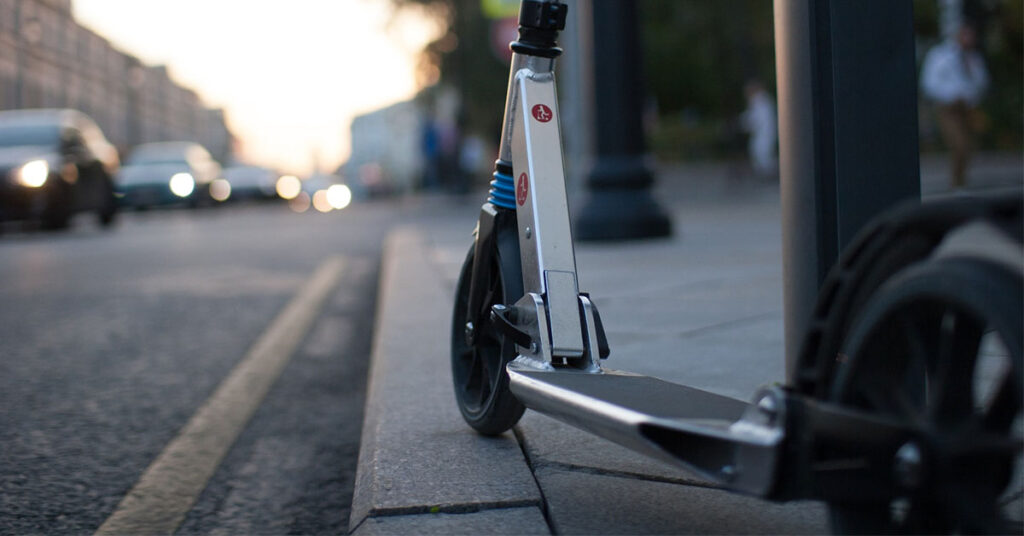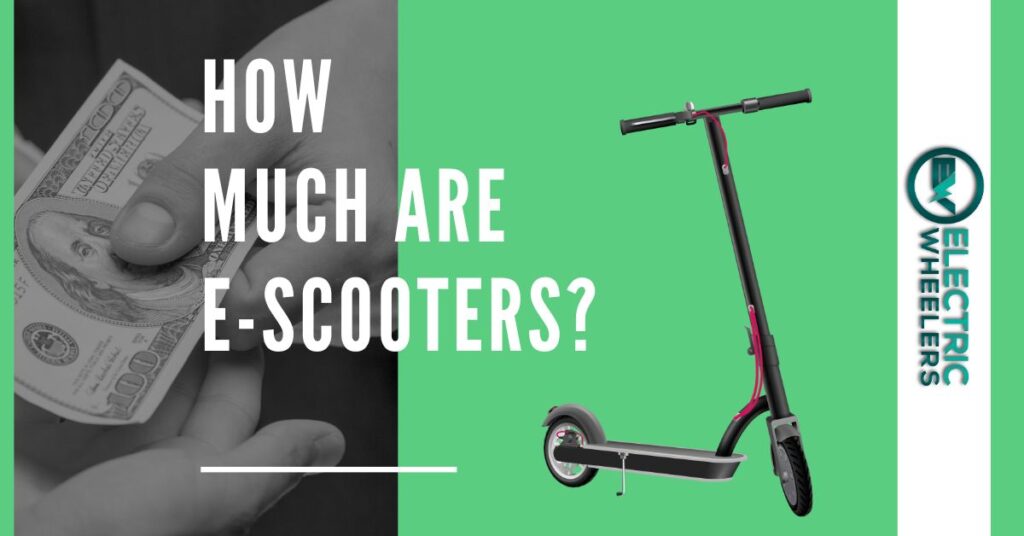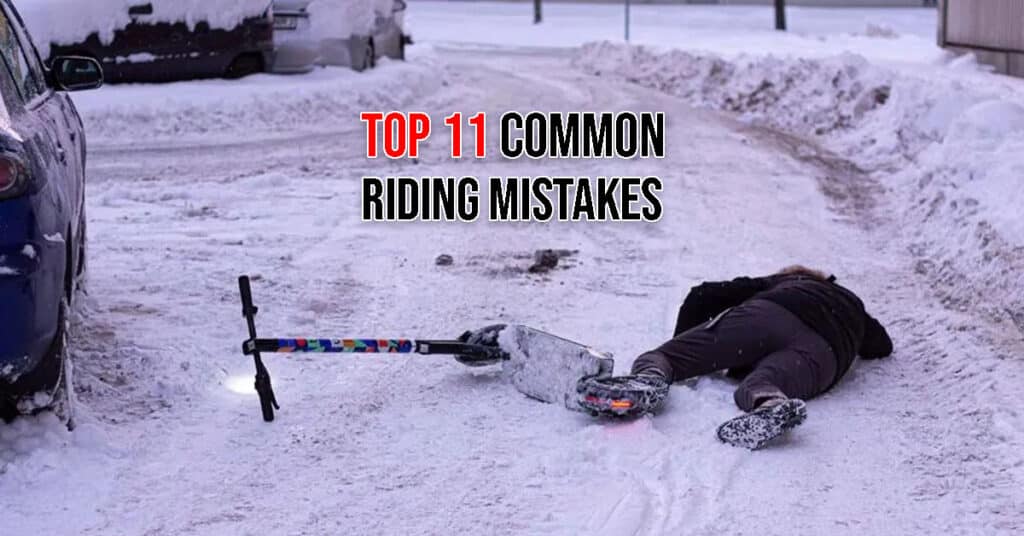Most electric scooters come with manuals providing lots of information, including how to charge the scooter. However, most of the information provided often lacks or covers the basics leaving out critical information.
Following the wrong steps when charging your scooter (like other rechargeable devices) could affect its battery’s capacity, charging speed, and power retention.
This article informs you on what’s needed to charge your scooter properly to ensure your battery is healthy and works efficiently.
- How to Charge an Electric Scooter?
- How Far Can Electric Scooter Go on One Charge?
- How Long Does Electric Scooter Battery Last?
- How to Ensure Longer Battery Life?
- How Much Does it Cost to Charge an Electric Scooter?
- Do I Have to Charge the Scooter After Every Ride?
- Do I Always Have to Charge the Scooter Fully?
- What to Do When Electric Scooter Won't Charge?
- How Can I Charge My Electric Scooter Without a Charger?
How to Charge an Electric Scooter?
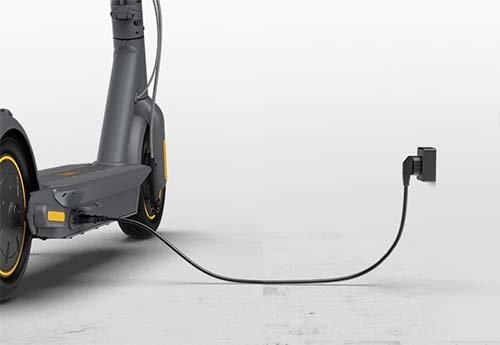
1. Power Off the Scooter
You must turn off your scooter when charging to prevent charging and discharging your e-scooter battery simultaneously, which could damage and affect its efficiency.
Check if the battery’s lights are off and the LCD screen isn’t on.
However, if you won’t be able to know if your scooter is fully charged unless the LCD screen is on, you’ll have to leave it on.
2. Cool Down and Dry the Scooter
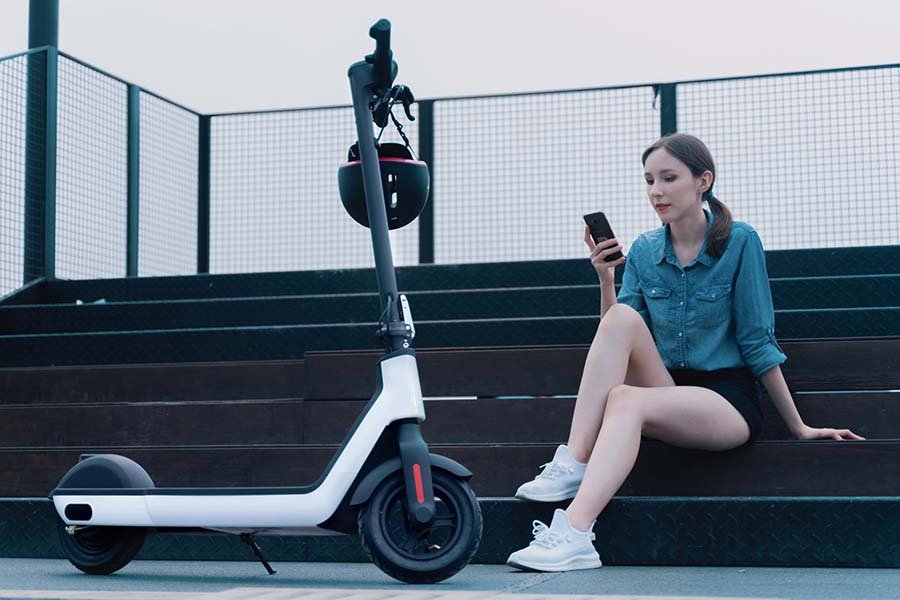
Most manuals don’t indicate whether it’s safe to charge your electric scooter before it cools down.
Remember that batteries don’t do well with heat. They are designed to work (and work best) in normal temperatures. Something that you should consider, especially when charging the scooter. We recommend that you wait for at least 30-minutes before charging your scooter.
While most scooters are advertised as water-resistant, very few of them are waterproof.
Therefore, if you’ve ridden your scooter in snow, rain, ice, mud, or puddles, you should ensure that you dry your scooter off before charging it. Otherwise, there is the chance that some water may have gotten into places that could hurt or damage your scooter.
3. Plug the Charger into the Wall
Why is plugging the charger into the wall first the best practice?

Plugging your scooter’s charger to the wall before plugging the other end to your scooter is good standard practice that should be observed when charging any other device.
Although most people think that doing this makes a small difference, the opposite is true. Plugging your scooter’s charger into the wall outlet first helps maintain its battery life.
Plugging the charger into the electric scooter before plugging it into the wall outlet exposes the batteries to an electrical surge that could damage them.
A surge is a rapid over-voltage, which exceeds a battery’s normal working voltage. It’s a violent, transient pulse generated in a millionth of a second and registered as a buzzing noise when charging your scooter.
Surges can cause electrical malfunctions and short circuits, and following this practice reduces instances where your scooter is affected by electrical surges.
4. Connect the Charger to the Electric Scooter
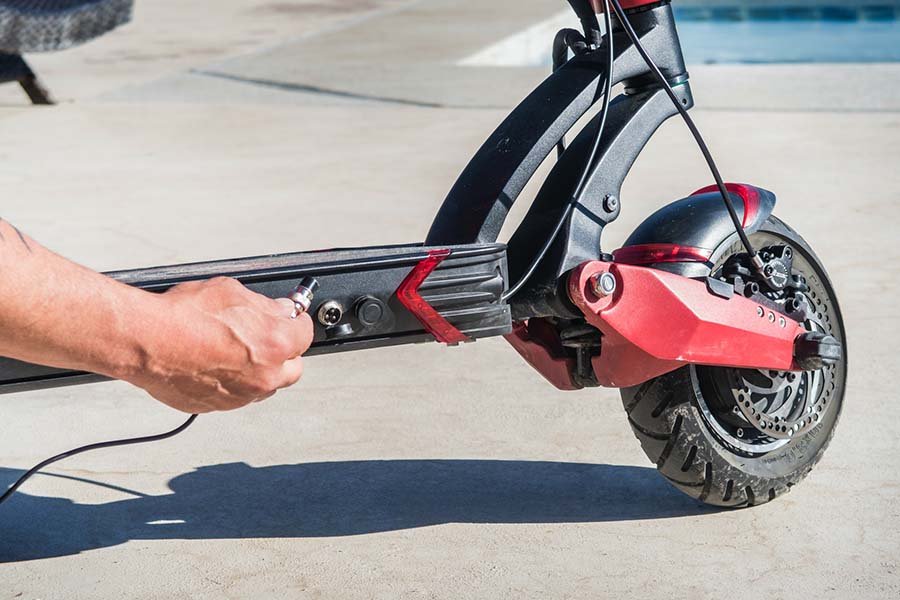
Plug the charging head into the scooter’s charging port.
Some scooters have a cap on their charging ports that you’ll have to remove before plugging in the charging head. Your scooter will start charging after plugging in the charging head.
Your scooter will indicate if it’s charging (check with the manual). Usually:
- Showing a green light on the scooter’s charger indicates that the charger works correctly.
- A red light that shows while the scooter charges mean that it’s charging properly.
- A steady, green light indicates that the scooter is fully charged.
5. Let the Scooter Charge
How long does it take to fully charge an electric scooter?

Owners must know how long it takes their scooter to charge.
On average, most scooters used currently take between three to eight hours of charge time. Most popular, budget electric scooters take approximately five hours to charge. This helps them avoid overcharging the scooter and damaging the battery.
However, all scooters average at six hours and 40 minutes of charge time.
You should consult with the scooter’s manual to get the accurate length of time it takes to charge your electric scooter. There are times when you can’t fully charge your scooter, and it’s okay, but you should ensure it’s fully charged to avoid draining it.
6. Disconnect the Charger on Time
Why shouldn’t you leave the scooter plugged in after charging?
Most scooters have protection designed to prevent them from overcharging.
However, not all scooters have this feature, and it won’t be proper to risk leaving your scooter plugged in if the overcharge prevention feature fails. Therefore, the best thing to do is unplug your scooter as soon as it’s fully charged.
Leaving your scooter plugged in for a few minutes after being fully charged won’t be so bad. However, leaving it plugged in for too long could affect its battery life, even if it’s fitted with overcharging protection.
Instead, you should figure out a charging pattern (depending on your scooter’s charging time) that allows you to charge the scooter fully without risking overcharging it.
For instance, if your scooter takes three hours to charge fully, you could plug it in after arriving home from work and plug it out three hours later as you prepare to sleep. If the scooter takes eight hours, you may plug it in as you go to bed and plug it out eight hours later, when you wake up.
7. Don’t Ride Immediately After Charging
You may feel tempted to unplug your scooter and go for a spin as soon as it’s fully charged, and it isn’t a huge deal.
However, if you want to prolong the scooter’s battery life, you should wait for five or more minutes before using it. Often, your battery is hot after charging, and using it while it’s hot could gradually damage it.
How Far Can Electric Scooter Go on One Charge?

An electric scooter’s range (on one charge) depends on the electric scooter and battery type.
For instance, some scooters are designed to provide a 75-mile range on a single charge. Often, such scooters are more reliable since they are equipped with more efficient, longer-lasting batteries than those with a shorter range.
However, some electric scooters allow significantly shorter ranges on a single charge. You should note that certain crucial factors influence how far your scooter can go. These factors include your speed, weight, battery life, the riding surface, weather conditions, angle of elevation, etc.
For instance, electric scooters cover shorter distances for riders that weigh more than those that don’t.
In addition, scooters with a short battery life have a shorter range. The ground surface where you’re riding your scooter also plays a huge role in the range offered by your scooter.
Rougher, hilly terrain uses up more power than smoother and flatter terrain.
Mid-range scooters provide a 35 to 40-mile range on a single charge.
How Long Does Electric Scooter Battery Last?
The amount of time depends on the mode being used. For instance, your scooter may last for 50 minutes when going fast and last significantly longer when going slow. Electric scooters last two hours (on average). However, some last as much as six hours when riding in energy-saving mode.
Related: How Long do Electric Scooters Last?
The amount of time your battery lasts also depends on the battery’s design and capacity. For instance, high-quality electric scooters can hold their charge for close to six hours of steady use.
However, remember that your scooter’s battery life depreciates over time, and the chances are that it’ll last shorter periods as time goes by.
The length of time your battery lasts (similar to your scooter’s range) depends on how and where it’s used.
Riding your scooter on rough hilly terrain uses more battery power than riding on smooth flat surfaces. Lastly, while your battery life degrades over time, poor charging patterns shorten your battery’s lifespan even more.
Expect the batteries to last between two and four years and (generally) have a 3000 to 5000 mileage. Proper charging and use of the scooter will allow for a good consistent range for a bigger portion of this period. However, it still depends on storage conditions and use.
How to Ensure Longer Battery Life?

You have to charge your battery correctly and use the right charger to ensure longer battery life.
Typically, your scooter’s battery lasts 300 to 500 charge cycles or between 2 to 3 years. You can expect the battery’s performance to dip after 200 or 300 cycles. However, low-quality batteries last significantly shorter periods, with better batteries lasting significantly longer.
Your scooter’s battery life depends on the brand. The battery design industry is extremely competitive and highly lucrative. It involves lots of trade secrets that (often) only the best companies know.
This is why it’s a good idea to buy products from the best companies since they already have a good track record of providing high-quality products.
Here are some simple steps to extend the battery life.
1. Don’t Store Your Scooter for a Long Period with a Full Battery
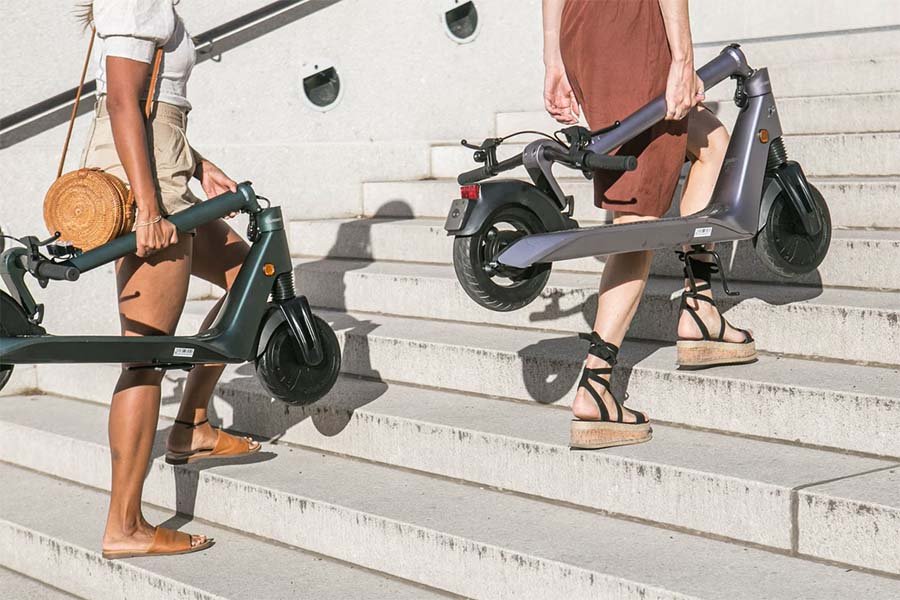
It would be best to store your battery for extended periods with a full battery since it could damage its integrity.
Instead, it would help to store the battery after ensuring that the battery level lies between 50 and 80%. This ensures that the battery is active enough to retain power but not too active to damage it.
2. Keep the Battery Charge Between 30-80%
While draining and fully recharging batteries works well with some devices, scooter batteries are not the case.
As mentioned before, it’s not a good idea to keep your scooter’s battery drained, and doing this shortens its lifespan. Instead, you should ensure the scooter’s battery percentage rests between 30 and 80%.
The battery level shouldn’t be so low that you risk draining it or so high that you risk overcharging it or damaging it when trying to maintain (for instance) a 99% or 100% charge.
Maintaining a 30 to 80% charge provides the best storage voltage for a healthy battery. Charging your batteries to 100 percent destroys their life cycle capacity.
3. Don’t Charge When it’s Too Hot or Too Cold

Batteries have an optimal performance temperature which (mostly) is at room temperature. The ideal temperature for charging your battery is about 20˚C (68˚F). Charging your scooter when the battery is too cold or hot damages it causing the battery to degrade a lot quicker than it usually would.
It would help if you didn’t charge your battery in temperatures lower than 0˚C (32˚F) or higher than 40˚C (104˚F).
Charging your scooter’s batteries while in the ideal temperature range increases its lifespan. Therefore, you should check the battery to determine whether it’s too hot or cold before charging it.
The best way to know is by observing the environmental temperature and comparing it to the scooter’s battery.
How Much Does it Cost to Charge an Electric Scooter?

On average, charging a low-capacity scooter costs two cents, four cents for the most common scooter, 12 cents for a medium-capacity scooter, and 45 cents for a high-capacity scooter.
Adult scooters need 125Wh-3024Wh of electricity to charge fully. Lower capacity 125Wh scooter batteries are often budget scooters meant to travel shorter distances.
Estimations suggest that charging a scooter for four cents per charge could cost the owner 6 cents of electricity per week, 27 cents in a month, and $3.22 yearly.
However, this depends on how often you use your scooter. Premium scooters often have a bigger battery capacity, over 3kWhs in some instances, and are meant to go longer distances.
Do I Have to Charge the Scooter After Every Ride?
You are advised to charge your scooter after each ride regardless of how high the battery percentage is.
This may vary depending on the battery. Therefore, you should check with the user manual if your battery has a different charging requirement.
However, it would help to wait until your battery has cooled enough before charging it.
Do I Always Have to Charge the Scooter Fully?
You don’t have to charge your scooter’s battery fully each time you use it, especially if it hasn’t discharged fully.
However, you should charge it fully if you plan on using it for a long distance. You should also charge it fully if you’ve depleted the lower than 30% battery.
What to Do When Electric Scooter Won’t Charge?
If you like DIYing, you could open it up and determine what may be causing the problem. However, we don’t recommend doing this.
You should check the battery’s history to determine whether it may be dead. Next, inspect it to determine whether it has an unusual smell, is swollen, or looks different.
If you find regular problems like battery or charger replacement, you can fix it. However, you should take it to the professionals if you don’t notice any issue or notice an issue that you can’t fix.
You should also check the battery’s temperature and test the charger’s output voltage using a voltmeter.
How Can I Charge My Electric Scooter Without a Charger?
It’s a very common question people ask.
Although there are some options to charge the battery without a charger, we wouldn’t recommend doing so.
If you are taking a longer ride and need to charge the scooter in the middle of it, just take the charger with you. Unless you are in the forest, try to find a place to charge the scooter.
If you know there is no way to find electricity, buy a spare battery. Then you can double the range of your e-scooter.
A freelance writer and copywriter.

